Sustainable Lingerie Elastic Solutions: Eco-Friendly Materials and Processes
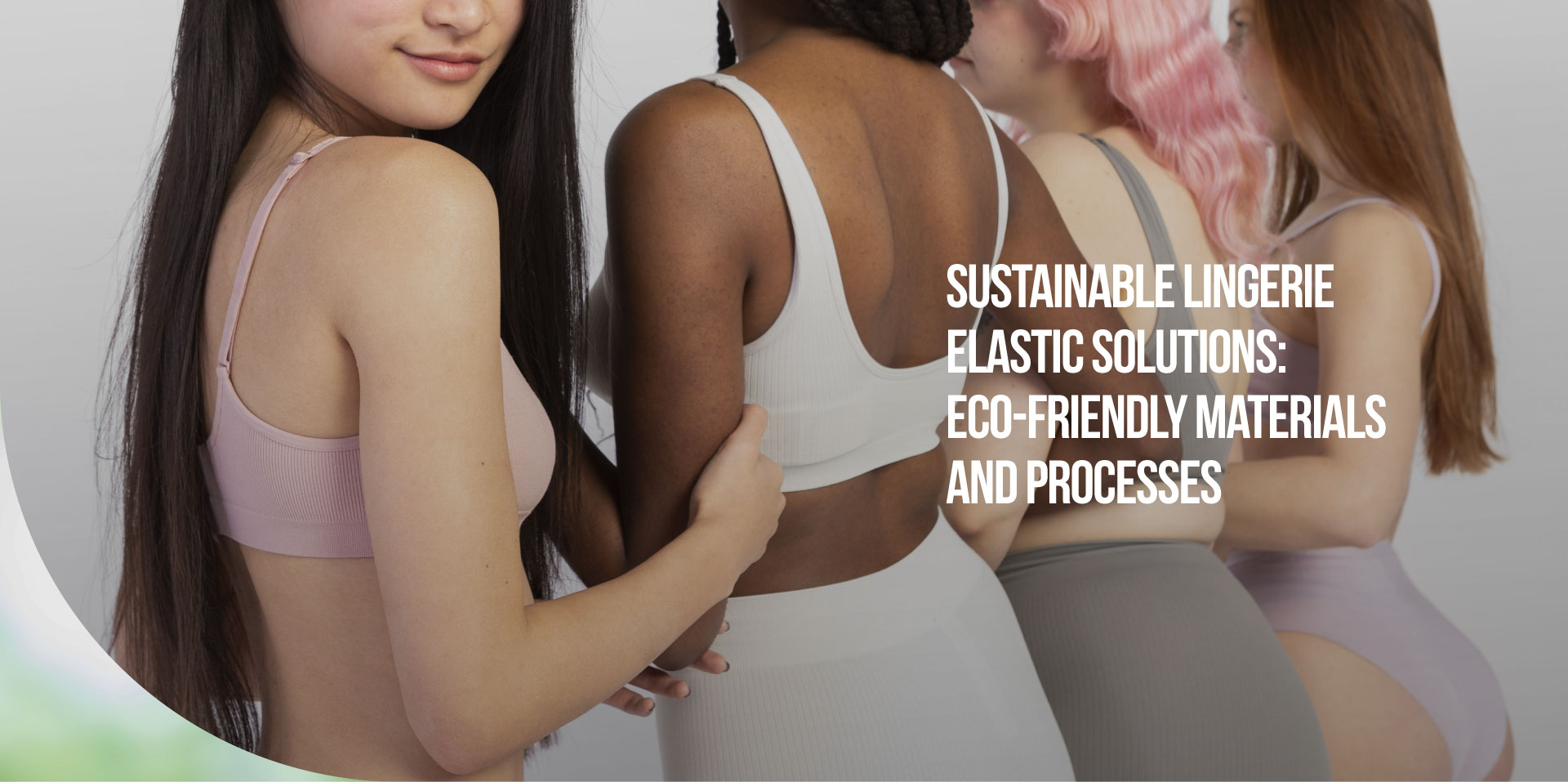
The intimate apparel industry is experiencing a big shift toward sustainability, driven by both consumer demand and regulatory pressures. For lingerie manufacturers and brand houses, this transition presents unique challenges—how do you maintain the comfort, fit, and performance that consumers expect while adopting eco-friendly materials and processes?
At ECI Elastic, we've been working closely with tier 1 manufacturers and leading brands to develop sustainable elastic solutions that don't compromise on quality. Here's what you need to know about the current landscape of eco-friendly lingerie elastics and how these innovations can enhance your product lines.
The Sustainability Challenge in Lingerie Manufacturing
Lingerie requires elastics that deliver exceptional comfort, durability, and recovery—often in direct contact with skin for extended periods. Elastane (spandex) remains an excellent material for achieving superior stretch and recovery properties, particularly in high-performance applications where maximum elasticity is essential.
However, as brands work toward circular design principles and mono-material constructions, there's growing interest in diversifying material options. While elastane-containing elastics continue to be vital for many applications, the industry is also exploring complementary solutions that can support recyclability goals in specific use cases where moderate stretch performance is sufficient.
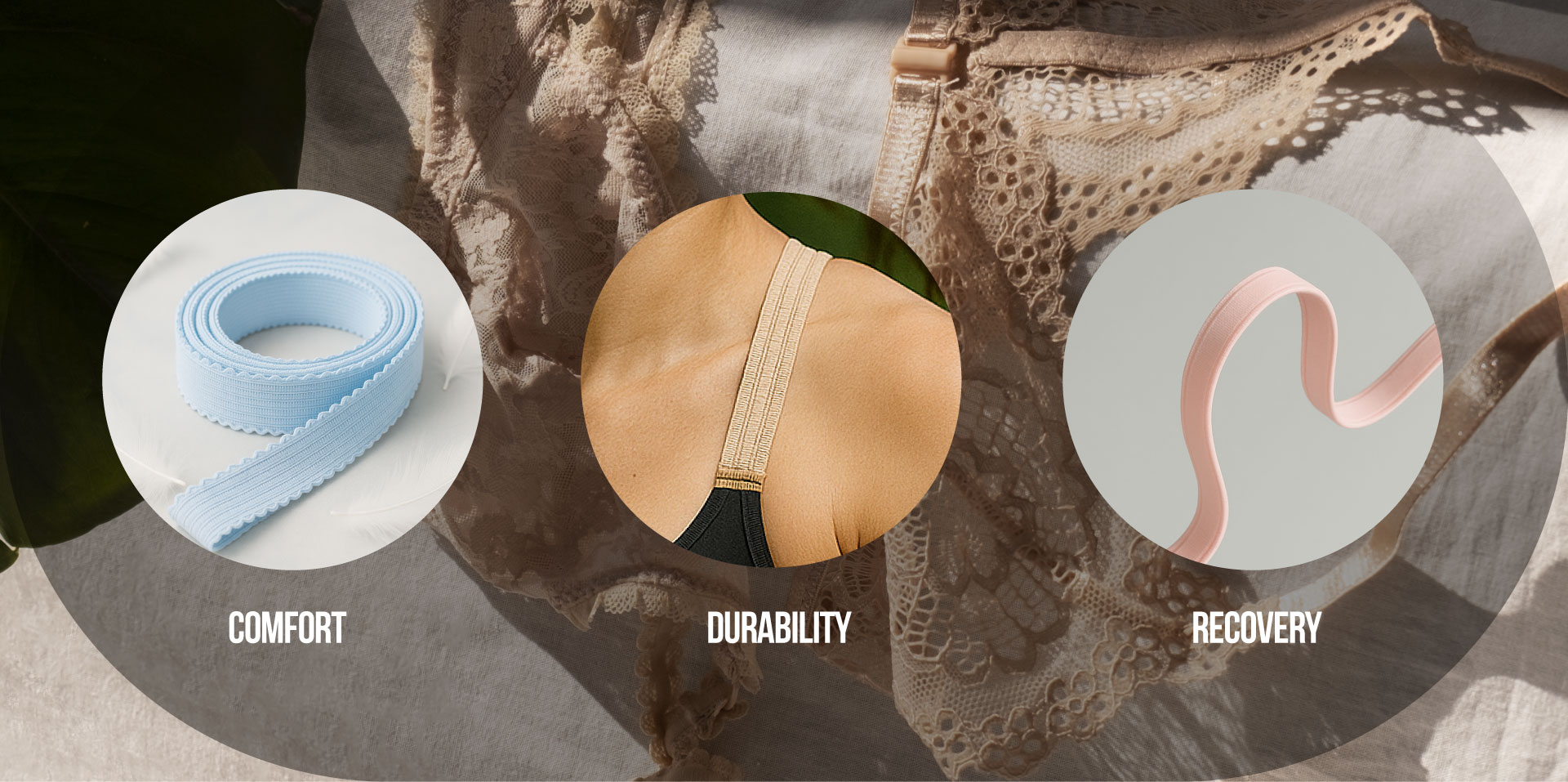
Recycled Polyester: The Foundation of Sustainable Elastics
Global Recycled Standard (GRS) Certification
Recycled polyester has emerged as a cornerstone material for sustainable lingerie elastics. GRS-certified recycled polyester yarns offer several advantages:
- Reduced environmental impact compared to virgin polyester
- Maintained performance characteristics
- Traceability throughout the supply chain
- Compatibility with existing manufacturing processes
Our experience shows that recycled polyester elastics can deliver stretch, recovery, and hand-feel while significantly reducing carbon footprint. The key is working with suppliers who understand the specific requirements of intimate apparel applications.
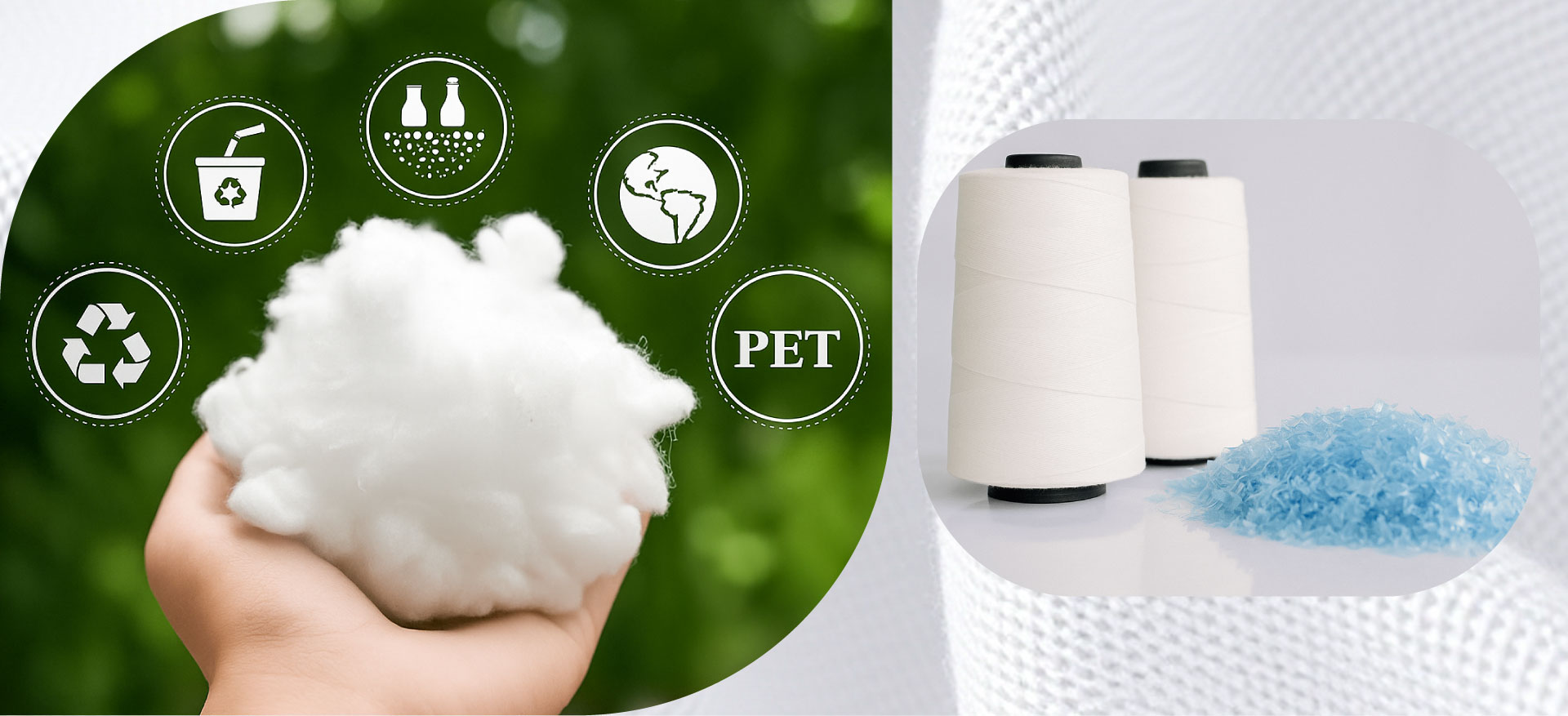
Performance Considerations
When transitioning to recycled polyester elastics, consider these technical factors:
- Stretch Recovery: Modern recycled polyester elastics maintain 90-95% recovery rates comparable to virgin materials
- Color Consistency: Advanced dyeing processes ensure batch-to-batch color matching
- Durability: Proper yarn selection and construction deliver wash-and-wear performance that meets lingerie standards
Green Manufacturing Processes
Sustainable materials are only part of the equation. Manufacturing processes play an equally important role in reducing environmental impact. At ECI, we've implemented comprehensive green manufacturing initiatives that demonstrate the industry's potential for positive change:
Energy Source Transition
A significant step in reducing carbon footprint involves transitioning from coal to natural gas in dyeing facilities. This shift, implemented across our operations in 2022, significantly lowers harmful environmental impacts while maintaining production quality and efficiency.
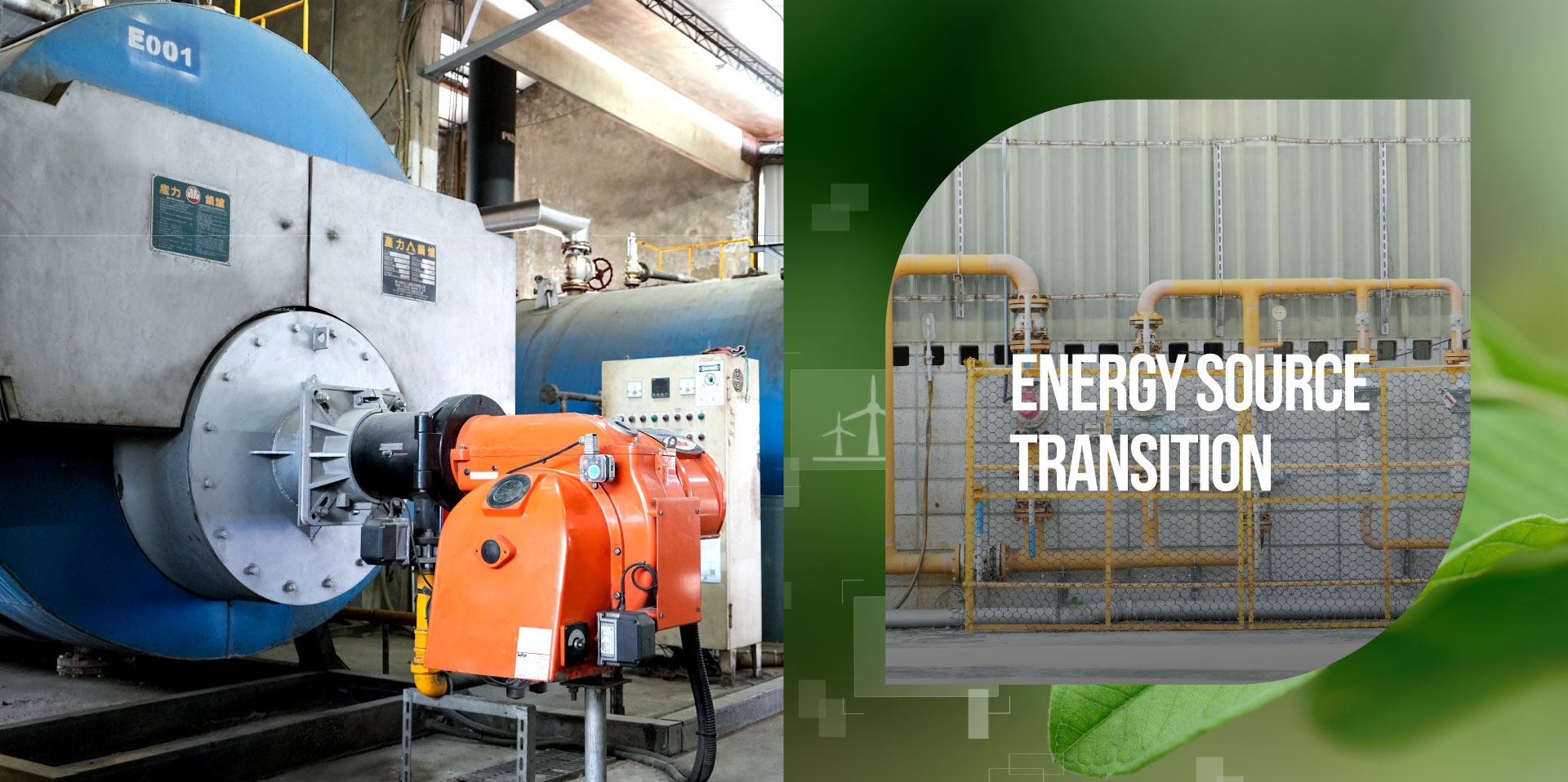
Equipment Modernization
Strategic machinery upgrades contribute substantially to sustainability goals:
- Electric Vehicle Fleet: Transitioning from diesel-powered to electric forklifts reduces emissions and enhances workplace safety
- Energy-Efficient Machinery: Upgrading covering machines with frequency converters enables more efficient operation, reducing energy consumption over time
- Integrated Production Lines: Combining weaving, knitting, and finishing operations minimizes transportation emissions and energy waste
Circular Manufacturing Systems
Closed-loop production approaches maximize resource efficiency:
- Scrap Yarn Recovery: Transforming production floor waste into fancy yarns creates a circular system that reduces waste while generating value-added products
- Water-Efficient Dyeing: Advanced dyeing technologies maintain color quality and consistency while significantly reducing water consumption—critical for lingerie elastics where precise color matching is essential
Certification and Standards
Comprehensive environmental management systems ensure consistent sustainability performance:
- OEKO-TEX® 100 Certification: Guaranteeing textile safety and environmental responsibility
- Higg FEM Implementation: Measuring and improving environmental performance through standardized assessment
- ISO 9001 Compliance: Maintaining quality management systems that support sustainable practices

Case Study: Mechanical Stretch Innovation
A recent example of sustainable innovation in action is the development of mechanical stretch tapes that eliminate elastane content entirely. These solutions use GRS-certified recycled polyester yarns to provide moderate elasticity without compromising recyclability—ideal for applications like binding tapes, decorative trims, and light-duty lingerie components where extreme stretch isn't required.
This approach supports mono-material garment construction, simplifying end-of-life processing while maintaining the performance characteristics that lingerie applications demand. Early adoption by forward-thinking brands demonstrates that sustainable alternatives can meet both technical and commercial requirements.
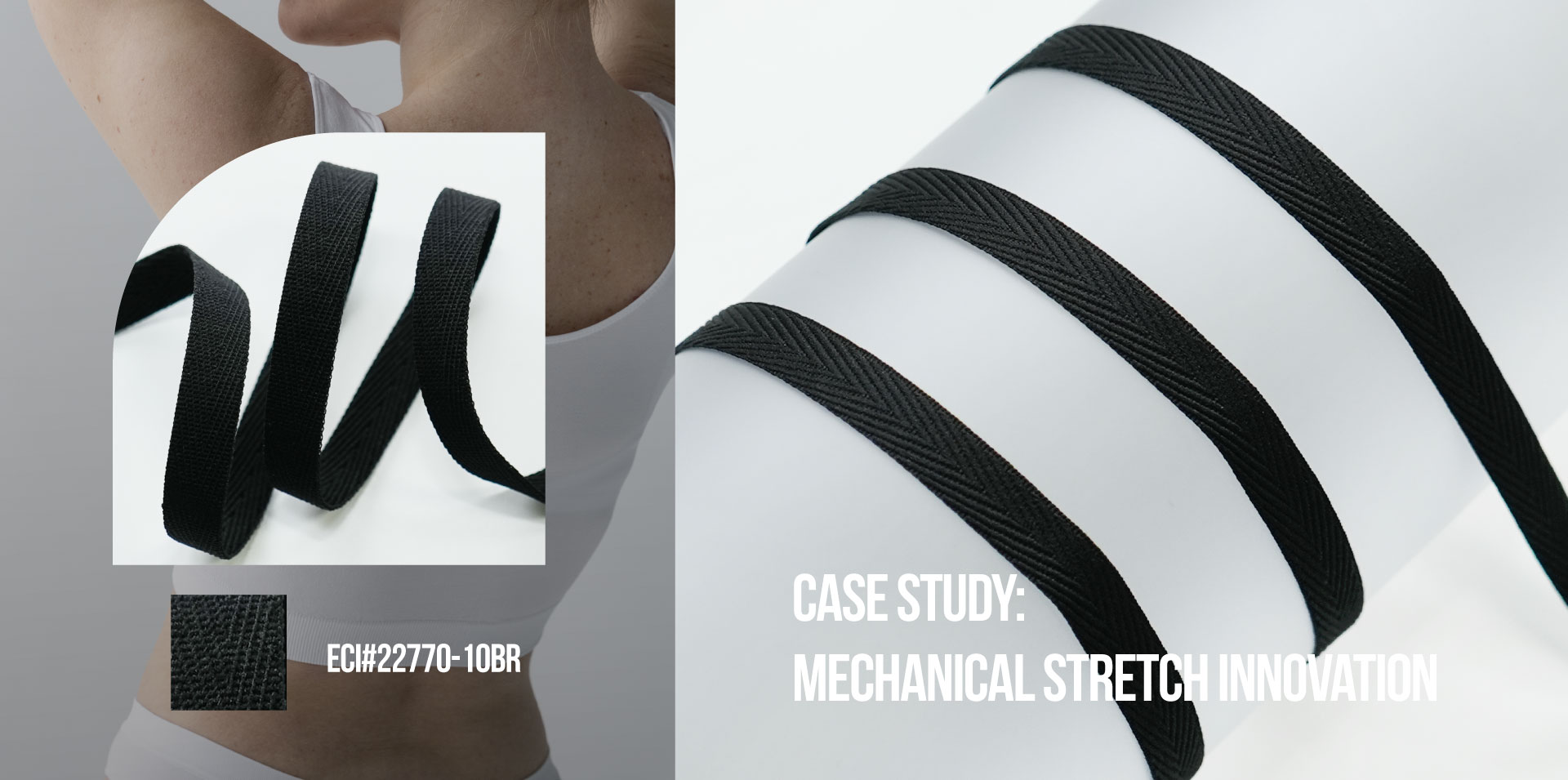
Implementation Strategies for Brands
Collaborate with Suppliers Early
Early collaboration with elastic manufacturers is crucial for optimizing both performance and sustainability outcomes. Working together during the design phase allows for:
- Material Selection Optimization: Understanding the specific stretch, recovery, and comfort requirements for each application enables precise material recommendations that balance performance with environmental goals
- Construction Engineering: Collaborating on tape width, thickness, and weave patterns ensures the elastic integrates seamlessly with garment construction while maximizing sustainability benefits
- Testing and Validation: Joint development programs allow for comprehensive testing of wash durability, colorfastness, and performance characteristics before committing to large-scale production
- Supply Chain Integration: Early partnership enables better forecasting, inventory planning, and quality control protocols that support consistent sustainable material delivery
Technical Specification Development
Develop detailed technical specifications that encompass both performance and sustainability criteria:
- Performance Parameters: Define minimum stretch percentages, recovery rates, and durability standards that sustainable materials must meet
- Environmental Metrics: Establish recycled yarn targets, carbon footprint reduction goals, and meet the demand for recyclable materials for each customer
- Testing Protocols: Create standardized testing procedures for evaluating sustainable elastics against conventional alternatives
Pilot Program Implementation
Begin with targeted applications that offer the highest success probability:
- Low-Stress Applications: Start with binding tapes, decorative trims, and light-duty applications where performance requirements are more flexible
- Controlled Testing: Implement pilot programs with select product lines to gather real-world performance data and consumer feedback
- Scalability Assessment: Evaluate manufacturing compatibility, cost structures, and supply chain readiness before broader implementation
The Future of Sustainable Lingerie Elastics
The evolution toward sustainable lingerie elastics is accelerating, driven by technological advances and market demand. Key trends to watch include:
- Bio-based elastane alternatives that provide high stretch with improved end-of-life characteristics
- Closed-loop recycling systems that capture and reprocess post-consumer intimate apparel
- Smart material innovations that combine sustainability with enhanced performance features
- Advanced smart and functional sustainable materials that integrate environmental benefits with performance features like temperature regulation and antimicrobial properties
- Technology-integrated intimate apparel that incorporates health monitoring capabilities, adaptive fit adjustments, and wellness management features while maintaining sustainable material standards
Conclusion
Sustainable lingerie elastics are no longer a future possibility—they're a present reality. The challenge for manufacturers and brands is selecting the right materials and partners to support their sustainability goals without compromising product quality.
At ECI Elastic, our integrated approach to sustainable manufacturing combines innovative materials like recycled polyester combined with green production processes. Our new mechanical stretch tape represents just one example of how the industry can advance sustainability while maintaining the performance standards that consumers expect.
The brands that embrace these sustainable solutions today will be best positioned to meet tomorrow's consumer demands and regulatory requirements. The question isn't whether sustainable lingerie elastics will become standard—it's how quickly your brand can adapt to lead this transformation.
To explore sustainable elastic solutions for your lingerie lines, including samples of our new mechanical stretch tape ECI#22770-10BR, visit www.ecigroup-global.com or contact our technical team for consultation.


